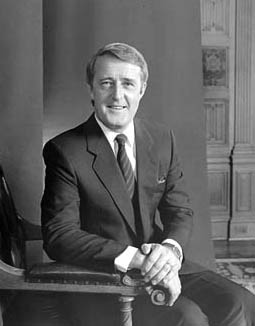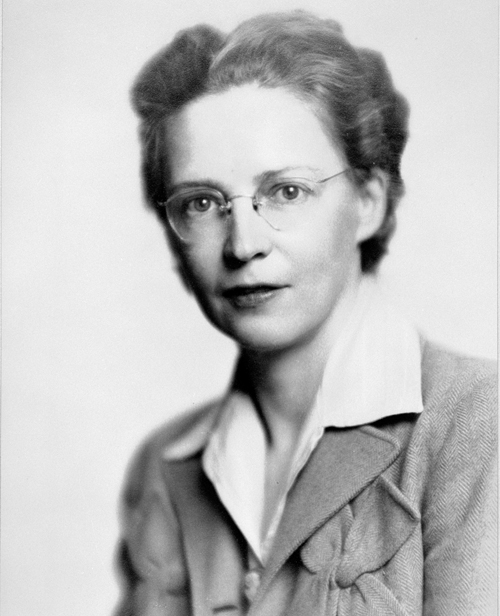Editorial
Ken Taylor and the "Canadian Caper"
The following article is an editorial written by The Canadian Encyclopedia staff. Editorials are not usually updated.

Enter your search term
Signing up enhances your TCE experience with the ability to save items to your personal reading list, and access the interactive map.
Create AccountEditorial
The following article is an editorial written by The Canadian Encyclopedia staff. Editorials are not usually updated.
"https://www.thecanadianencyclopedia.ca/images/tce_placeholder.jpg?v=e9dca980c9bdb3aa11e832e7ea94f5d9" // resources/views/front/categories/view.blade.phphttps://www.thecanadianencyclopedia.ca/images/tce_placeholder.jpg?v=e9dca980c9bdb3aa11e832e7ea94f5d9

Article
The Charlottetown Accord of 1992 was a failed attempt by Prime Minister Brian Mulroney and all 10 provincial premiers to amend the Canadian Constitution. The goal was to obtain Quebec’s consent to the Constitution Act, 1982. The Accord would have recognized Quebec as a distinct society; decentralized many federal powers to the provinces; addressed the issue of Indigenous self-government; and reformed the Senate and the House of Commons. The Accord had the approval of the federal government and all 10 provincial governments. But it was rejected by Canadian voters in a referendum on 26 October 1992.
"https://d3d0lqu00lnqvz.cloudfront.net/media/media/8d1b4b1d-ce97-42aa-99a7-f4e33c1f6b7a.jpg" // resources/views/front/categories/view.blade.phphttps://d3d0lqu00lnqvz.cloudfront.net/media/media/8d1b4b1d-ce97-42aa-99a7-f4e33c1f6b7a.jpg

Article
The contents of the Québec values charter were unveiled on 10 September 2013, by Bernard Drainville, a member of Pauline Marois’ Parti Québécois government and Minister responsible for Democratic Institutions and Active Citizenship. The goal of this highly anticipated charter was the creation of a secular society — a society in which religion and the state are completely separate. The result of numerous controversies in the media and in Québec society regarding reasonable accommodation, the charter encouraged religious neutrality by means of five “proposals.” One of the proposals was a ban on the wearing of any visible symbol indicating a religious affiliation, including a turban, hijab or kippah, by public servants when they are providing services to the public. The charter sparked controversy in Québec and divided the Québécois. On 7 November 2013, Drainville officially tabled the bill (Bill 60) in Québec’s National Assembly.
"https://d3d0lqu00lnqvz.cloudfront.net/media/media/aa124fea-cca4-4d56-8176-2b8fa9c2da28.jpg" // resources/views/front/categories/view.blade.phphttps://d3d0lqu00lnqvz.cloudfront.net/media/media/aa124fea-cca4-4d56-8176-2b8fa9c2da28.jpg

Article
The 1217 Charter of the Forest (Carta de Foresta) is a companion document to the Magna Carta of 1215.
"https://d3d0lqu00lnqvz.cloudfront.net/media/media/12f085dc-bd2e-4629-b64e-74e579809d83.jpg" // resources/views/front/categories/view.blade.phphttps://d3d0lqu00lnqvz.cloudfront.net/media/media/12f085dc-bd2e-4629-b64e-74e579809d83.jpg

Article
Bill C-20, the bill known as the Clarity Act gives effect to the requirement for clarity set out by the Supreme Court of Canada in the Québec Secession Reference.
"https://www.thecanadianencyclopedia.ca/images/tce_placeholder.jpg?v=e9dca980c9bdb3aa11e832e7ea94f5d9" // resources/views/front/categories/view.blade.phphttps://www.thecanadianencyclopedia.ca/images/tce_placeholder.jpg?v=e9dca980c9bdb3aa11e832e7ea94f5d9

Editorial
The following article is an editorial written by The Canadian Encyclopedia staff. Editorials are not usually updated. On a Sunday evening, 3 June 1990, Prime Minister Brian Mulroney and the ten provincial premiers marked the third anniversary of the Meech Lake Accord at a dinner in the architectural splendour of the Canadian Museum of Civilization (now the Canadian Museum of History) in Hull, Quebec.
"https://d3d0lqu00lnqvz.cloudfront.net/media/media/73c1f655-bfcc-4aa6-9251-c0d5c550fde4.jpg" // resources/views/front/categories/view.blade.phphttps://d3d0lqu00lnqvz.cloudfront.net/media/media/73c1f655-bfcc-4aa6-9251-c0d5c550fde4.jpg

Article
Early in the morning of 4 Feb 1880, a party of armed men brutally murdered James Donnelly, a farmer living near the village of LUCAN, Ont, his wife Johannah, his sons Thomas and John, and his niece Bridget Donnelly.
"https://www.thecanadianencyclopedia.ca/images/tce_placeholder.jpg?v=e9dca980c9bdb3aa11e832e7ea94f5d9" // resources/views/front/categories/view.blade.phphttps://www.thecanadianencyclopedia.ca/images/tce_placeholder.jpg?v=e9dca980c9bdb3aa11e832e7ea94f5d9

Article
By December 1837 and January 1838, rebels from Upper and Lower Canada had suffered heavy defeats at the hands of British and Loyalist forces. (See: Rebellion in Lower Canada; Rebellion in Upper Canada.) They fled to the United States to seek financial and military assistance. The American public was aware that there had been armed conflicts in the Canadas. Many were even initially supportive. However, the presence of Canadian rebels on American soil forced many to question American involvement. The growing tensions with Great Britain over the Caroline Affair complicated matters. The creation of the Republic of Texas and the fight over the abolition of slavery were also factors. In January 1838, US President Martin Van Buren took steps to ensure America’s neutrality in the Canadian rebellions.
"https://d3d0lqu00lnqvz.cloudfront.net/media/media/a4abe204-c34a-4e1d-95d4-4b754e7b9598.jpg" // resources/views/front/categories/view.blade.phphttps://d3d0lqu00lnqvz.cloudfront.net/media/media/a4abe204-c34a-4e1d-95d4-4b754e7b9598.jpg

Article
The Elsie Initiative for Women in Peace Operations is a Canadian-led multilateral project aimed at increasing women’s meaningful participation in peace operations. Named after aeronautical engineer and women’s rights pioneer Elsie MacGill, the initiative figures into Canada’s feminist foreign policy and Global Affairs Canada’s commitment to the United Nations’ Women, Peace and Security agenda (see Canada and Peacekeeping).
"https://d3d0lqu00lnqvz.cloudfront.net/media/media/008643e1-8d7f-4f2b-85d8-7c3f94caecd6.png" // resources/views/front/categories/view.blade.phphttps://d3d0lqu00lnqvz.cloudfront.net/media/media/008643e1-8d7f-4f2b-85d8-7c3f94caecd6.png

Editorial
The following article is an editorial written by The Canadian Encyclopedia staff. Editorials are not usually updated. On 15 February 1965, at hundreds of ceremonies across the country and around the world, the red and white Maple Leaf Flag was raised for the first time. In Ottawa, 10,000 people gathered on a chilly, snow-covered Parliament Hill. At precisely noon, the guns on nearby Nepean Point sounded as the sun broke through the clouds. An RCMP constable, 26-year-old Joseph Secours, hoisted the National Flag of Canada to the top of a specially-erected white staff. A sudden breeze snapped it to attention.
"https://d3d0lqu00lnqvz.cloudfront.net/media/media/59917f0c-b633-43e2-bb85-3d0ded55dc95.jpg" // resources/views/front/categories/view.blade.phphttps://d3d0lqu00lnqvz.cloudfront.net/media/media/59917f0c-b633-43e2-bb85-3d0ded55dc95.jpg

Editorial
The following article is an editorial written by The Canadian Encyclopedia staff. Editorials are not usually updated. The Baldwin–LaFontaine government of 1848 has been called the “great ministry.” In addition to establishing responsible government, it had an incomparable record of legislation. It established a public school system and finalized the founding of the University of Toronto. It set up municipal governments and pacified French-Canadian nationalism after a period of unrest. Responsible government did not transform Canada overnight into a fully developed democracy. But it was an important milestone along the road to political autonomy. Most importantly, it provided an opportunity for French Canadians to find a means for their survival through the British Constitution. The partnership and friendship between Baldwin and LaFontaine were brilliant examples of collaboration that have been all too rare in Canadian history.
"https://d3d0lqu00lnqvz.cloudfront.net/media/media/ba6bdff6-574a-4697-ac95-afdcc5ddfcc9.jpg" // resources/views/front/categories/view.blade.phphttps://d3d0lqu00lnqvz.cloudfront.net/media/media/ba6bdff6-574a-4697-ac95-afdcc5ddfcc9.jpg

Article
Filmmaking is a powerful form of cultural and artistic expression, as well as a highly profitable commercial enterprise. From a practical standpoint, filmmaking is a business involving large sums of money and a complex division of labour. This labour is involved, roughly speaking, in three sectors: production, distribution and exhibition. The history of the Canadian film industry has been one of sporadic achievement accomplished in isolation against great odds. Canadian cinema has existed within an environment where access to capital for production, to the marketplace for distribution and to theatres for exhibition has been extremely difficult. The Canadian film industry, particularly in English Canada, has struggled against the Hollywood entertainment monopoly for the attention of an audience that remains largely indifferent toward the domestic industry. The major distribution and exhibition outlets in Canada have been owned and controlled by foreign interests. The lack of domestic production throughout much of the industry’s history can only be understood against this economic backdrop. This article is one of four that surveys the history of the film industry in Canada. The entire series includes: Canadian Film History: 1896 to 1938; Canadian Film History: 1939 to 1973; Canadian Film History: 1974 to Present; Canadian Film History: Notable Films and Filmmakers 1980 to Present.
"https://d3d0lqu00lnqvz.cloudfront.net/media/media/1f440346-22dd-48de-951f-264baf7a7fc4.jpg" // resources/views/front/categories/view.blade.phphttps://d3d0lqu00lnqvz.cloudfront.net/media/media/1f440346-22dd-48de-951f-264baf7a7fc4.jpg

Timelines
The Indian Act is the principal law through which the federal government administers Indian status, local First Nations governments and the management of reserve land and communal monies. The Indian Act does not include Métis or Inuit peoples. The Act came into power on 12 April 1876. It consolidated a number of earlier colonial laws that sought to control and assimilate Indigenous peoples into Euro-Canadian culture. The Indian Act has been amended many times over...
"https://d3d0lqu00lnqvz.cloudfront.net/media/media/cbcd31d1-03f6-4fba-a45d-96ee89c4617d.jpg" // resources/views/front/categories/view.blade.phphttps://d3d0lqu00lnqvz.cloudfront.net/media/media/cbcd31d1-03f6-4fba-a45d-96ee89c4617d.jpg

Editorial
The following article is an editorial written by The Canadian Encyclopedia staff. Editorials are not usually updated. Everett George Klippert (1926–1996) was a popular Calgary bus driver who was jailed for homosexuality from 1960 to 1964, and from 1965 to 1971. An unlikely martyr, he shunned the spotlight. Klippert was once described as “Canada’s most famous homosexual” due to his unjust prison sentences, which ultimately led to the decriminalization of homosexuality in Canada.
"https://d3d0lqu00lnqvz.cloudfront.net/media/media/d5d0ce81-9f5e-4938-8c53-1fdaee0b6c39.jpg" // resources/views/front/categories/view.blade.phphttps://d3d0lqu00lnqvz.cloudfront.net/media/media/d5d0ce81-9f5e-4938-8c53-1fdaee0b6c39.jpg

Article
One of the great, unheralded events in Canadian history took place in September 1841 at an annual feast and ceremony of Illumination at Sharon Temple, meeting place for the Children of Peace.
"https://d3d0lqu00lnqvz.cloudfront.net/Responsible government.png" // resources/views/front/categories/view.blade.phphttps://d3d0lqu00lnqvz.cloudfront.net/Responsible government.png
